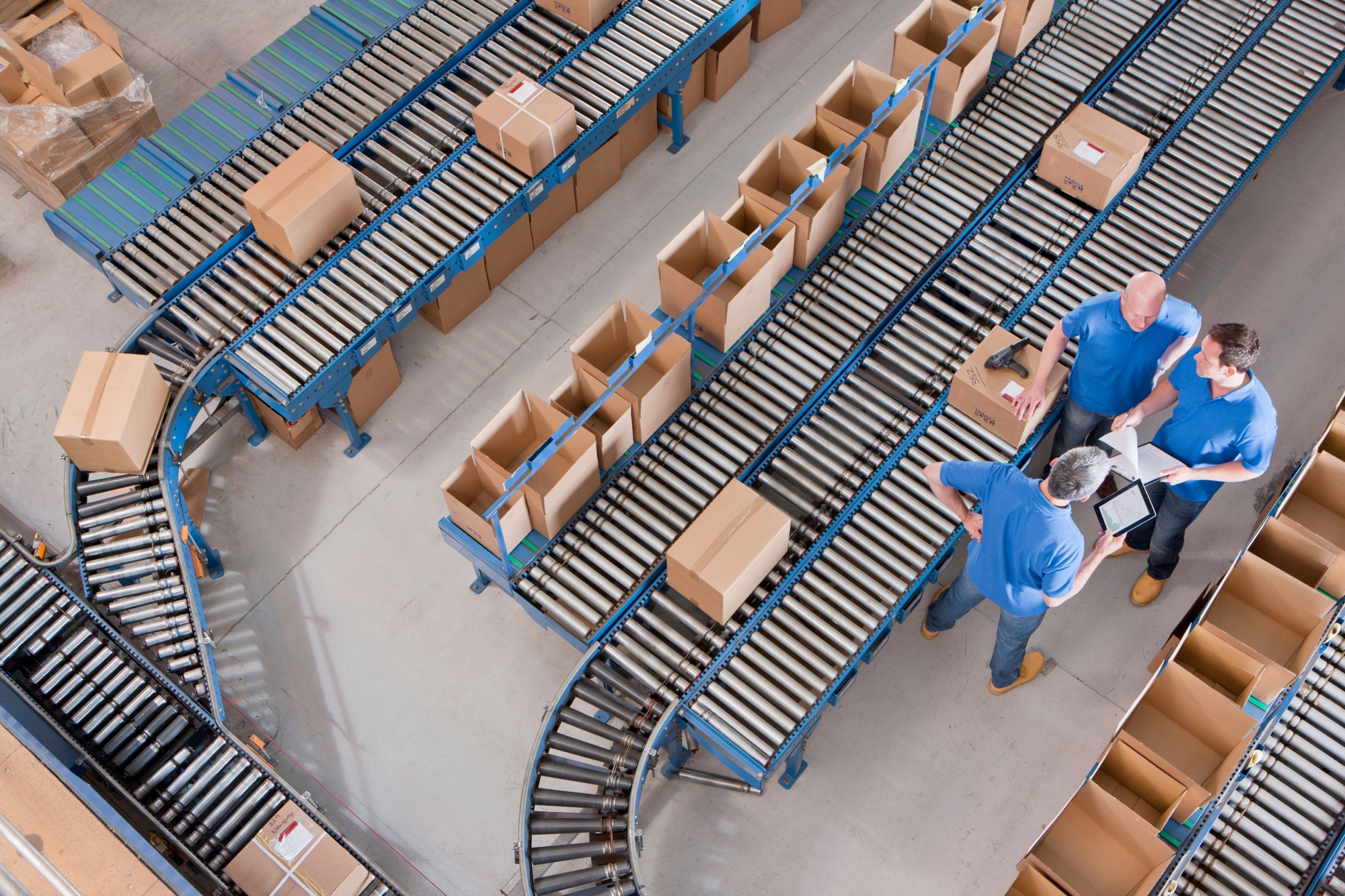Whitepaper - Productivity and Competitiveness in European Industry
Introduction: a European wake-up call
The European manufacturing industry is under pressure. Rising labour costs, geopolitical tensions, scarcity of raw materials and talent, and increasing global competition make increasing productivity and competitiveness more urgent than ever. At a recent panel discussion organised by Stanwick, six experienced consultants from various industry sectors went in search of answers. What are the causes of productivity stagnation? And most importantly, how do we crack the code?
About the panel
This white paper is based on insights from a roundtable discussion with six consultants from Stanwick Management Consultants:
Find out more about their background at: stanwick.be/en/team.
What do we mean by productivity?
Before we formulate solutions, it is crucial to have a common understanding of the problem. In this paper, we use the definition:
Productivity = economic output / hours worked
Output can range from number of pieces to litres or tonnes. It is essential to approach this fraction as a whole: both the numerator and the denominator deserve attention.
Is there a problem? Yes. And it is urgent.
The panellists were unanimous: Europe has a productivity problem. Growth is stagnating and that is no coincidence. They identified seven structural causes:
- Global competition
Companies from growth markets such as China and India are producing faster and cheaper, putting pressure on European players. - Consumer expectations
Customers expect ever faster delivery times, customisation and constant innovation. This increases pressure on production and development processes. - Labour costs
In countries such as Belgium, labour costs have risen sharply, partly due to automatic indexation. This makes it difficult to remain competitive without productivity gains. - Energy costs
Energy prices in Europe are structurally higher than in other regions, which has a direct impact on the cost of production. - Scarcity
Both raw materials and labour force are scarce. This limits growth opportunities and increases the need for efficient use of resources. - Economic downturn
In times of economic growth, there is less focus on efficiency. But with a cooling economy, the importance of productivity suddenly becomes crucial again. -
Geopolitical uncertainty
Trade conflicts, protectionism and fragile supply chains create unpredictability and a need for agility in production and supplies.
Introduction: themes with direct impact on productivity and competitiveness
Five themes recurred as a common thread throughout the debate:
- Industry 4.0 - Technology offers huge opportunities, but is not a panacea without process knowledge.
- Firefighting economy - Pressure on speed displaces structural improvement.
- Leadership on the floor - Real change starts with engaged leadership, close to the shop floor.
- Apathy as a behavioural problem - Without belief in improvement, no movement.
- Complexity vs complication - We need to learn to distinguish what to accept and what to eliminate.
This white paper compiles the insights and translates them into concrete recommendations for tomorrow's industry.
1. Industry 4.0: Powerful, but not a panacea
Industry 4.0 remains a powerful concept, but it is not a panacea. Digitalisation and automation only really pay off when they are embedded in a deep understanding of the process and supported by the people on the shop floor.
"A new packaging line was installed with the promise of 20% productivity gains. After six months, it turned out that only 5% of that gain was realised."
The cause? No review of the process, no involvement of the operators, and no training on the new line.
2. Firefighting economy
We live in an economy where speed and short-termism dominate. Organisations want to see quick results and close tickets without addressing the real problem. This leads to superficial solutions and lingering old problems.
"Making mistakes is allowed, but only once."
The pressure to develop new products and services should not stop us from stabilising processes. Sustainable productivity growth requires reflection and stabilisation. The classic PDCA cycle and SDCA principles remain relevant.
Death of the generalist
Nobody oversees the entire process anymore. Everyone works in their own silo. There is a need for end-to-end process knowledge. Simply mapping the process, knowing who does what, and involving people, often delivers more than implementing a new tool.
"In the quest for optimisation and innovation, organisations often lose the overview."
A simple exercise such as value stream mapping can provide surprising insights and is often the first step towards structural improvement.
Companies should humble themselves and engage external expertise if necessary to restore the overview.
Standardisation and visual management
Standardisation and visual management are often the first steps towards productivity growth. By standardising processes, we create stability. Visual management makes performance and deviations visible, which is crucial for daily steering.
3. Leadership on the floor
Go to Gemba - literally, "go to the shop floor" - is not a hollow slogan. For managers, it means: go to see, listen and understand. Not to control, but to learn. The shop floor is where value is created as well as where waste becomes visible.
Lifelong learning and operator engagement
Operators are key players in productivity. Investing in their training - both internal and external - is essential. Lifelong learning should be embedded in the culture of the organisation.
4. Apathy as a behavioural problem
A striking observation: "We don't believe in it anymore".
What is needed is a fresh look, renewed motivation and leadership that re-inspires people to improve.
Two fundamental behavioural problems were identified during the panel discussion:
- Institutionalised behaviour: fixed patterns and routines that hold back innovation.
- Fixed mobilisation: difficulty in getting people to move despite clear need.
Culture as a lever
There is no shortcut to productivity. Culture is the key. Leadership, commitment and professionalism are foundations for any successful transformation. Deming's 14 principles - although more than 40 years old - are more relevant today than ever. They provide guidance for organisations that really want to improve.
5. Complexity vs. Complication: Understanding what you can influence
The panel discussion drew an important distinction between two often confused concepts: complexity and complication. Although they are similar, they have fundamentally different origins as well as impact on productivity.
- Complexity is usually customer-driven. Think customisation, variation in products, regulations or market-specific requirements. This complexity is often unavoidable and is part of the playing field in which an organisation operates. It requires smart processes, flexible systems and agile teams.
- Complication, on the other hand, is self-created. It is about inefficiencies created by poor coordination, overlapping systems, unclear responsibilities or redundant reporting. Complication is often the result of historical choices, silo thinking or a lack of process understanding.
Why is this distinction so important?
Because we need to learn to manage complexity, but actively being able to eliminate complications. Many organisations try to increase productivity by investing in technology or extra capacity, when in fact they need to address their own complications first.
An example: a company using three different ERP systems for one product line creates unnecessary complication. The customer does not demand three systems - that is an internal choice that leads to delays, errors and frustration.
By focusing on this distinction, organisations can improve in a more focused way: manage complexity, reduce complication.
Conclusions and recommendations
The code is not easy to crack, but it can be done. The five themes discussed show that productivity is not a matter of one action or technology, but of an integrated approach:
- Technology must be supported by process knowledge and commitment.
- Speed should not be an excuse for superficial solutions.
- Leadership must be visible on the floor, not just in the boardroom.
- Culture determines whether people move or remain stagnant.
- Complexity must be managed, complication eliminated.
From the panel discussion, we arrived at four concrete recommendations:
- Technology is not a solution in itself
Digitise with an eye for process and people. Technology is a means, not an aim. - Slow down to accelerate
Take the time to understand, standardise and improve processes. Don't get stuck in the status quo. - Leadership is crucial
Build a culture where leaders make a difference. Involve all layers of the organisation. - Manage complexity actively
Analyse which complexity arises internally and which you take on from customers. Not everything has to be complex.
Contact us to discuss how we can solve your challenges with our proven approach.

Stanwick. Drive for results
Stanwick offers result-oriented coaching programmes on operational excellence, project excellence and supply chain excellence with a focus on people, organisations and processes. We perform thorough assessments, develop clear roadmaps and implement and anchor improvements to guarantee sustainable results.
Our Stanwick Academy organises extensive training courses in which you learn together with a like-minded community about project management, continuous improvement, data-driven organisations, leadership and change management.









